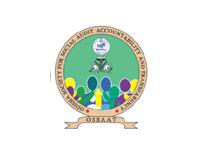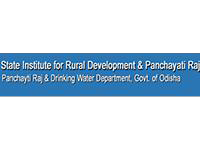About Department
Rural development is the main pillar of state development. The thrust of policies and programmes of the Panchayati Raj & Drinking Water Department is on all-around economic development and social justice through empowerment. The activities of the Panchayati Raj & Drinking Water Department can be classified into the following categories:
- Strengthening and empowering PRIs
- Ensuring Pucca Housing for the rural people
- Providing clean and safe piped drinking water for all in rural areas
- Adopting sustainable practices by reducing waste
- Promoting healthy life through rural sanitation programme
- Development of Rural Infrastructure
- Wage-employment programme
- Enabling rural youth to become self-reliant through Self Employment programme
- Setting up of Rural Industrial Park and marketing initiatives/linkages through ORMAS
Panchayati Raj Institutions (PRIs)
Odisha Grama Panchayat Act was enacted in the year 1948. Subsequently in the year 1961, 3 tier system of Panchayati Raj Institutions was introduced in Odisha. Over the last 50 years Panchayati Raj Institutions have emerged as the powerful institutions in bringing about rapid and sustainable development and socio-economic transformation in rural Odisha. It has an integrated perspective towards improving the quality of lives of rural people and ensuring equity and effective peoples’ participation. 73rd amendment of the Constitution has conferred constitutional status to Panchayati Raj Institutions.
The Provisions of Panchayats (Extension to Scheduled Areas)Act aims at empowering Panchayati Raj Institutions in Scheduled areas for economic development and social justice. In the year 2002, election to 3 tier of Panchayati Raj Institutions held in conformity with 73rd amendment and PESA thereby empowering tribal people as envisaged under the PESA. The Government have the obligation to bring up Panchayati Raj Institutions as Institutions of Self -Self-Government as per 73rd amendment of the Constitution of India 1992. 73rd Amendment marks a new era in the federal set up of the country and provides constitutional status to the PRIs.
The prime objectives of the 3 tiers Panchayati Raj System are to eradicate poverty, uplift standard of living of people in the rural areas, and bring about a healthy society by creating awareness for hygiene, sanitation and eradication of illiteracy. The state has established a State Election Commission to conduct the election of PRIs. The 73rd amendment of the Constitution mandates Government to endow the Panchayati Raj Institutions with such powers and authority as may be necessary to enable them to function as institutions of self-Government. It also provides that powers and responsibility shall be devolved upon PRIs subject to such conditions as may be specified therein, with respect to the preparation of plans for economic development and social justice and implementation of schemes for economic development and social justice as may be entrusted to them including those listed in the 11th Schedule.
Basic Services
Panchayats at village levels are expected to perform certain obligatory functions to provide basic services to all the people living in the area. Gram Panchayats in Odisha have been empowered to levy taxes and manage community assets created out of different poverty eradication and area development schemes. They as constitutional bodies represent the model of community participation and social empowerment. Basic services among others include:
- Primary education
- Primary health
- Safe Drinking water
- Sanitation and street lighting
- Environment protection
- Common property resources (CPR) management
















